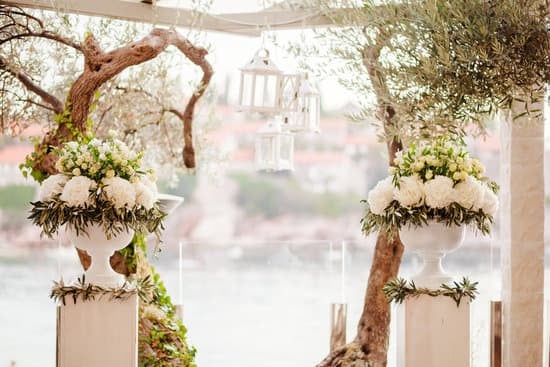Why is the wedding ring worn on the right hand? The tradition of wearing wedding rings holds deep cultural and symbolic significance in many societies. From its historical origins to modern interpretations, the placement of the wedding ring on the right hand carries various meanings. In this article, we will delve into the significance of the wedding ring and explore the reasons behind its traditional placement on the right hand.
The history of wedding rings dates back centuries, with different cultures and religious beliefs shaping their symbolism and significance. Understanding the evolution of this tradition gives us insight into why wedding rings are traditionally worn on the right hand. Additionally, personal preferences and modern trends have also influenced the placement of wedding rings, leading to a variety of practices seen today.
As we explore the significance of wearing a wedding ring on the right hand, it’s essential to consider how cultural traditions and individual choices contribute to its meaning. By examining historical, cultural, and personal aspects, we can gain a deeper understanding of why this tradition holds such importance in many societies around the world.
History of Wedding Rings
The tradition of wearing wedding rings dates back to ancient Egyptian times, where the circle was a symbol of eternity. The ring was placed on the fourth finger of the left hand, as it was believed that this finger contained the “vena amoris” or the “vein of love” that led directly to the heart. Over time, this tradition spread to other cultures and civilizations, each adding their own unique customs and symbolism to the practice.
In ancient Rome, wedding rings were often made of iron, symbolizing strength and permanence. It wasn’t until later that gold became the preferred material for wedding bands, representing wealth and prosperity. The exchange of rings during a marriage ceremony also became a widely recognized symbol of commitment and unity between two individuals.
As Christianity spread throughout Europe, the wearing of wedding rings gained religious significance. In Christian ceremonies, the priest would bless the ring before it was placed on the bride’s finger, signifying God’s blessing on the union. This added a spiritual dimension to the act of exchanging rings during a wedding.
Throughout history, various cultures have adopted different traditions regarding which hand to wear the wedding ring on. While in many Western countries it is customary to wear the ring on the left hand, in some Eastern European and South American countries, it is worn on the right hand. These diverse customs demonstrate how cultural influences have shaped our understanding of the significance of wearing a wedding ring.
Cultural and Religious Influence
The tradition of wearing wedding rings is deeply rooted in cultural and religious beliefs, with specific practices varying across different societies and faiths. The placement of the wedding ring on the right hand is often influenced by these cultural and religious traditions, making it an important aspect of the marriage ceremony.
In many Eastern Orthodox Christian and some Eastern European cultures, the wedding ring is worn on the right hand. This practice is based on the belief that the right hand is closer to the heart, signifying a strong emotional connection to one’s spouse. For these cultures, the right hand holds a symbolic significance in marriage, representing love, fidelity, and commitment to one’s partner.
Similarly, in some Asian cultures such as India, wearing the wedding ring on the right hand is also common. In Hindu tradition, for example, the right hand is considered auspicious and sacred. Therefore, placing the wedding ring on this hand symbolizes blessings and good fortune for the couple’s union.
Moreover, religious customs play a significant role in determining which hand to wear the wedding ring. In Jewish tradition, for instance, it is common for both men and women to wear their wedding rings on their right hands during the wedding ceremony. This custom reflects a spiritual connection between husband and wife within Jewish marriage traditions.
Overall, understanding the cultural and religious significance behind wearing wedding rings on the right hand sheds light on why this practice continues to hold importance for many individuals around the world. Whether as a symbol of devotion or as a way to honor long-standing traditions, this placement holds deep meaning within various cultural and religious contexts.
Personal Preferences
When it comes to the placement of wedding rings, there are various factors that influence an individual’s decision to wear their ring on the right hand. Personal preferences play a significant role in this choice, as each person may have their own reasons for deviating from the traditional placement on the left hand. Let’s explore some of the reasons why some individuals choose to wear their wedding rings on the right hand.
Symbolic Meaning
For some individuals, wearing the wedding ring on the right hand holds a specific symbolic meaning. In certain cultures and belief systems, the right hand is associated with strength, power, and authority. Therefore, these individuals may choose to place their wedding ring on their dominant hand as a symbol of the strong bond and commitment within their marriage.
Individual Style and Comfort
Another reason for wearing the wedding ring on the right hand is simply a matter of individual style and comfort. Some people may find that wearing a ring on their non-dominant hand feels more natural and comfortable, while others may prefer the aesthetic balance of having a ring on each hand. Additionally, personal taste in jewelry and fashion can also influence the decision to wear the wedding ring on the right hand.
Cultural or Family Traditions
In some cases, individuals may choose to wear their wedding ring on the right hand as a way of honoring cultural or family traditions. Certain cultures or families may have specific customs or beliefs regarding which hand should be used for wearing wedding rings, leading individuals to follow these traditions out of respect for their heritage.
Overall, personal preferences play a significant role in determining whether an individual chooses to wear their wedding ring on the right hand. Whether it’s for symbolic significance, comfort, style, or cultural reasons, these individual choices contribute to redefining the tradition of wearing wedding rings.
Symbolism of the Right Hand
The wearing of a wedding ring on the right hand is a tradition that carries deep symbolism and meaning. In many cultures and belief systems, the right hand has been associated with power, authority, and strength.
Historically, the right hand was often used for oaths and pledges, which may have contributed to the tradition of placing the wedding ring on this hand. The symbolism of the right hand also extends to ideas of honor, loyalty, and fidelity, all of which are integral aspects of marriage.
In some religious traditions, the right hand holds particular significance. For example, in Christianity, the right hand is often associated with blessings and divine approval. As such, wearing a wedding ring on the right hand can be seen as a symbol of God’s blessing on the marriage.
Similarly, in Hindu culture, the right hand is considered auspicious and is used for important ceremonies and rituals. Therefore, wearing the wedding ring on this hand may be seen as a way to invite positive energy into the marital union.
In addition to cultural and religious symbolism, there are also personal reasons why individuals choose to wear their wedding rings on their right hands. Some people may simply prefer the aesthetics or comfort of wearing their ring on that particular hand.
Others may have inherited family traditions or customs that dictate wearing the ring on the right hand. Regardless of individual motivations, it is clear that the symbolism and meaning behind wearing a wedding ring on the right hand hold great significance for many people around the world.
| Symbolism of Right Hand | Significance |
|---|---|
| Power and authority | Historical associations with oaths and pledges |
| Religious symbolism | Christianity & Hinduism traditions regarding blessings and positivity |
| Personal preferences | Aesthetics, comfort, family traditions |
Modern Trends
In recent years, there has been a noticeable shift in the way modern couples approach the tradition of wearing wedding rings. One notable trend is that some couples are opting for non-traditional ring designs and styles, moving away from the classic gold band to unique materials such as wood, titanium, or even silicone.
This shift in ring choices is also accompanied by a reevaluation of where the wedding ring should be worn, leading to more individuals choosing to wear their rings on the right hand.
Additionally, with changing gender roles in society, some couples are choosing to customize their ring-wearing practices to better align with their personal beliefs and values. For example, some same-sex couples may choose to wear their wedding rings on the same hand or finger as a symbol of equality and unity within their relationship. This trend reflects a broader societal shift towards redefining traditional norms and embracing individuality.
Moreover, social media and celebrity influences have also played a role in shaping modern trends related to wedding rings. With increased visibility into different cultural practices and personal preferences, individuals are becoming more open to exploring alternative ways of wearing wedding rings that resonate with their unique identities and experiences.
As a result, the placement of the wedding ring on the right hand is gaining traction as a popular choice among modern couples seeking to express themselves in new and meaningful ways.
| Wedding Ring Trends | Impact on Placement |
|---|---|
| Non-traditional designs | More individuals choosing to wear on right hand |
| Customized practices | Reflecting personal beliefs and values |
| Social media influence | Growing openness to alternative placements |
The Left Hand Versus the Right Hand
The tradition of wearing a wedding ring on a specific hand has varied throughout history and across different cultures. One common question that arises is why the wedding ring is worn on the right hand as opposed to the left hand. This practice differs from the more popular custom of wearing the ring on the left hand for many people. Understanding the reasons behind this tradition can provide insight into the cultural and personal significance of wearing a wedding ring.
Historical and Cultural Significance
The traditional placement of the wedding ring on the right hand can be traced back to ancient civilizations, where it was believed that this hand was linked to concepts of power, strength, and masculinity. In some cultures, such as those in Eastern Europe and parts of India, the right hand was considered more auspicious or sacred, making it the preferred choice for wearing a wedding ring.
Additionally, religious influences have also played a significant role in determining which hand is considered appropriate for wearing a wedding ring.
Symbolism and Meaning
In certain cultures and belief systems, each hand holds its own symbolism. The right hand is often associated with action, assertiveness, and strength, making it an ideal placement for symbols of commitment such as a wedding ring.
On the other hand (no pun intended), some believe that wearing a wedding ring on the left hand signifies tapping into more emotional and intuitive qualities. Understanding these symbolic meanings helps shed light on why individuals may choose one hand over the other for their wedding rings.
Personal Choices
While tradition and symbolic meanings play a significant role in determining which hand to wear a wedding ring on, personal preference cannot be overlooked. For some individuals, factors such as comfort or practicality may influence their decision to wear their wedding ring on their right hand rather than their left. Regardless of cultural or historical traditions, personal choices ultimately shape how individuals choose to symbolize their commitment through wearing a wedding ring.
Conclusion
In conclusion, the tradition of wearing the wedding ring on the right hand has a deep cultural and religious significance that has evolved over time. From ancient civilizations to modern times, this practice has been influenced by various cultural and religious beliefs, with different meanings attributed to the placement of the ring. While some individuals may choose to adhere to these traditional customs, others may opt for personal reasons to wear their wedding ring on the right hand.
The symbolism of the right hand in different cultures and religions also plays a significant role in the placement of the wedding ring. From representing strength and commitment to being associated with specific rituals and beliefs, the right hand holds a special meaning in many traditions. As couples continue to redefine and personalize their wedding rituals, they may choose to honor these traditions or create their own unique interpretations of wearing the ring.
Ultimately, whether worn on the left hand or right hand, the wedding ring stands as a symbol of love and commitment between partners. It is a personal choice that reflects individual beliefs, cultural influences, and personal preferences.
As we embrace different customs and traditions around the world, it is important to acknowledge and respect these choices while also celebrating the universal significance of marriage and unity. So when someone asks “why is the wedding ring worn on the right hand,” it’s clear that there are various answers rooted in history, culture, religion, and personal choice.
Frequently Asked Questions
What Does Wearing Wedding Ring on Right Hand Mean?
Wearing a wedding ring on the right hand can have various meanings depending on cultural and personal preferences. In some countries, wearing it on the right hand may signify a new engagement, while in others, it could indicate a different marital status.
Why Do Foreigners Wear Wedding Ring on Right Hand?
Foreigners may wear wedding rings on the right hand due to cultural or religious traditions in their home countries. For example, in some Eastern European and South American cultures, wearing the wedding ring on the right hand is common practice and seen as the norm.
Why Are Wedding Rings Worn on the Left Hand?
The tradition of wearing wedding rings on the left hand dates back to ancient Egypt, where it was believed that a vein ran directly from the fourth finger of the left hand to the heart, symbolizing love and commitment. This belief has been passed down through generations and is now a widespread custom in many Western cultures.

I have been involved in marriages for over 20 years helping couples and singles understand more about them.





